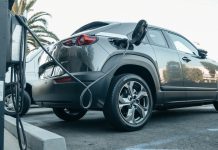We need to redefine the meaning of the vehicle detail page (VDP).
At a time when automobile shoppers are expecting more transparency and user-friendly experiences, the VDP is more than a listing of a vehicle’s features – it’s an opportunity to create connections with consumers.
Auto dealerships are embracing a better way to grow their businesses by rallying around The 4Ps of Automotive Marketing™: Product (what to buy), Price (what to pay), Place (where to buy), and Person (who to buy from). As noted in an October column in the CBT Automotive Network, changing consumer behavior is the main catalyst for the new 4Ps. Shoppers research an average of 9 automotive sites on average before they purchase a vehicle.[i] Their high expectations of a great user experience in automotive are shaped by transparent, user-friendly experiences they get on sites in other industries.
So what do The 4Ps of Automotive Marketing mean to the VDP? Plenty.
For online consumers, digital VDPs need to be more dynamic, user-friendly, and transparent. In short, auto dealers need to treat digital VDPs as competitive assets that drive increasingly savvy shoppers to the lot, where the sale is made. Here are four ways to do so:
Be Visual
In the age of Instagram, VDPs need to tell visual stories. VDPs need to feature eye-popping visuals and video. They need to make the distinctive features of your vehicles jump off the screen, which means you can forget about using boring stock photos. And you should make your vehicles seem more real and exciting with engaging video.
Write Great Content
Treat your VDP as a gripping narrative, not a list of features. Your content should complement your video with words that paint pictures and help the shopper imagine the car belonging to them. You should optimize your content for the words and phrases people use to look for cars. Include calls to action to guide shoppers from your VDP to the lot.
Win with Price
The price on your VDP is more than a number. It’s one indicator of value.
VDPs need to help shoppers find the best value for their needs, considering a multitude of factors ranging from the shopper’s budget to their most essential needs in a vehicle. Put another way: the price on your VDP needs to discuss the why, not just the what.
“Why” includes variables such as optional features and how geographic location influences price. Is the vehicle fully loaded? Does the price include features that are most important to that buyer? Is there another similar vehicle priced more competitively nearby?
The need for more context has inspired Cars.com to add price badging on our own VDPs. Our badges aggregate features and options with current market conditions to produce the price rating down to geographic location. Today, we assess prices on VDPs in four ways:
- Great Deal which means the vehicle is priced significantly below market average
- Good Deal which identifies cars priced at or slightly below market average
- Fair Price for vehicles priced slightly above market average
- Well-Equipped highlighting vehicles that include additional features that are affecting the price
This kind of context is not only good to provide, but essential to provide in the era of transparency.
Showcase Your People
Your VDP should feature your salespeople, too. Sounds counterintuitive, doesn’t it? After all, a VDP is supposed to be about the vehicle. But a sale results from two people on the lot, the seller and the shopper, talking with each other. Your VDP needs to drive the shopper to the lot.
That’s why Cars.com has added profiles of salespeople on the Cars.com VDP. We’ve also added the ability for shoppers to select salespeople based on those profiles. Shoppers can choose salespeople based on factors such as their customer ratings, reviews, and years of experience through the new Salesperson Connect™ features on the VDP.
Sharing information about your people in your VDP also injects humanity into your brand. After all, your vehicles attract interest – but your people make the sale.
So how well does your VDP drive sales?
[i] JD Power, JD Power New Autoshopper Study, 2017








